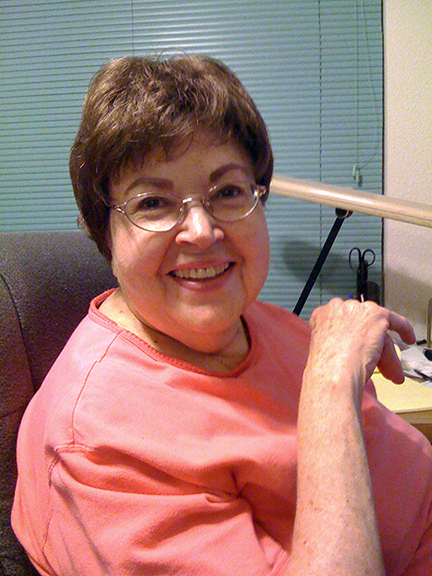Polio Place
A service of Post-Polio Health International
Past and Future
Category: Essays
 Grace Young
Grace Young
When I had polio at age 9, I was happy to have a wheelchair - any wheelchair - that would allow me the freedom to leave my bedroom. The only model available at that time was all wood with a cane back and wooden wheels. Undoubtedly it’s featured in the Smithsonian now. Large, heavy, clunky - forget taking it outside the house. It was a feat to even move it inside the house.
Once I was parked in a room I stayed there until someone came along to push me somewhere else. If an object got dropped, it stayed on the floor until someone came along to pick it up. I did develop a useful talent, though. I became an expert in reading four different books at the same time. The living room, dining room, bedroom, and kitchen--each had a book that I could resume reading if that’s where I happened to land.
Well, I can’t resist reminiscing about times past because it makes me appreciate the life I have now as a disabled person, imperfect as it is. So what would I predict for the future? There are two phenomena that I think bode well for the future of people with disabilities.
The first is the “Graying of America,” a phrase that is very relevant to us. Almost everyone who lives long enough will have mobility problems, as well as difficulties with bathing, toileting, dressing, housing, transportation. There have been many improvements, but we still see bus drivers not trained to use their lifts, unramped streets and buildings, narrow doors, inaccessible toilets, fire hydrants blocking sidewalks, too little crossing time at streetlights and people with attitudes of exclusion. Ruth at Wheelie Catholic describes her situation where the bus driver had not been trained on how to use the bus lift and tie-downs and the other passengers very vocally displayed their displeasure at being delayed. However, the good news is that as a larger percentage of the population gets older, people with disabilities will benefit from improved (and in some cases enforced) accessibility, accommodations, and—especially—attitudes.
The second phenomenon is the result of a war most of us wish had never happened. Starting in the near future, thousands of profoundly wounded service men and women will complete their rehabilitation and enter society with special needs that match or exceed those we have been living with. These wounded warriors may be the impetus that will accelerate the changes that we have been working for. More government and private funding will be earmarked for research into equipment, housing, environmental adaptations, transportation, health care, and other areas to meet those needs. I anticipate that, along with attitude changes toward accommodating people with disabilities, the resulting improvements will trickle down and benefit all of us.
© 2008 Grace R. Young
Courtesy of Diane Young and Sharon Lark
Tagged as: accessibility , aging , attitudes , disability rights , mobility , wheelchairs